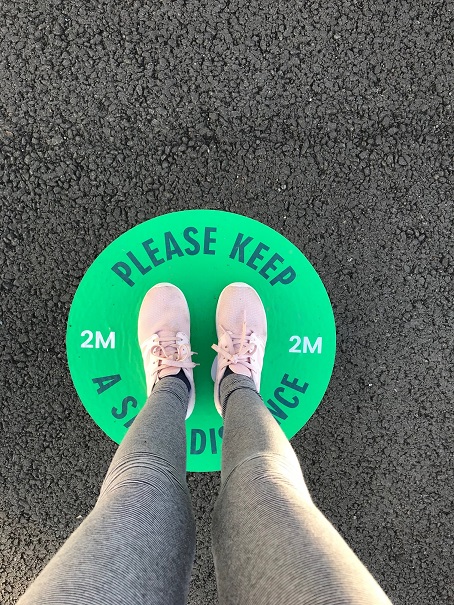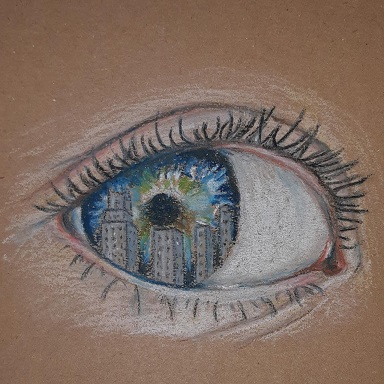‘Capturing Lives’: Using university collections to engage young people through lockdown
NOTE: This blog first appeared on the Scottish Funding Council website on 30th July 2020.
University museums have been adapting to Covid-19 since March. Sarah Burry-Hayes discusses how they treated the lockdown as an opportunity to offer digital content and programming.

In March, we all had to adapt. Normal life was paused, and we had to rapidly get used to new ways of working, learning, teaching and communicating digitally. With our universities closing their campuses, university museums also shut their doors, but we didn’t stop our engagement activities. Quite the contrary. We took the opportunity that lockdown provided to stop, take stock, and re-think our normally predominantly physical offering into digital content and programming.
University museums are in a unique position to engage young people and communities with further and higher education. The broader appeal of our objects and collections, our work with schools and community groups, our public exhibitions, events and programmes often act as the conduit between the general public and our institutions.
One specific programme, Capturing Lives in Scotland’s Communities, ran over the school summer holidays in June and July. Aimed at young people aged 11-18 from across Scotland and particularly targeted at those with Widening Participation backgrounds, the project encouraged them to explore their local communities during Covid through different mediums of art. Combining online guided sessions exploring university museums’ collections and archives, elements of self-guided creative activity, mentoring and talks from professional organisations, those that completed the course would achieve an Arts Award Explore qualification.
Overall, the aims of the project were not only to engage those that had never interacted with a university or university museum before (64% were interacting with universities for the first time), but also to provide the participants with an opportunity to develop their artistic skills and knowledge, gain confidence, work and communicate with new people and ultimately, that they would be more likely to consider applying to universities in future.
We offered 100 places on the project, which resulted in over 180 applications from 15 Scottish local authority areas – from Orkney to the Scottish Borders. Of the 119 participants finally selected, almost 60% were from Widening Participation backgrounds, with a further 26 from SHEP schools.

Mentoring through the project was provided on a voluntary basis by current students of the participating universities. This brought an additional opportunity for existing students to expand their skills and experience with working with young people.
With so much digital content at their fingertips, we were interested to see how engaged the young participants of the project would be, but their enthusiasm and commitment has been overwhelming, as has the commitment and creativity of our student mentors. We were delighted that the evaluation of the project found that 91% of participants would recommend the project to a friend, 79% said participating had made them more likely to visit the university campuses to see the museums and collections and 64% said it had made them more likely to apply to some or all of the participating universities in future.
This comment from one of our participants, Sis, aged 13, really sums up the impact of the project:
“I learnt about lots of different areas of art and design. It felt like a year of art lessons in 6 weeks and was work that I never get at school. It was like a try out for art school and it helped me know it’s what I want to do. I wish my art lessons at school were this good.”
Reflecting on the success of the project for the university museums involved, Laura Beattie from the University of Edinburgh Museums commented:
“It’s been wonderful to be able to engage young people from all over Scotland with our Art Collection and archival material, especially during this time when our buildings have been closed to the public. Delivering the project digitally has meant that elements that normally would have acted as barriers to taking part – such as geography – have been removed, meaning we were able to offer the project to a broader range of participants.”
Overall, 85% of the participants are interested in doing a similar programme in future for higher levels of the Art Award, and UMIS’s university museums are now in discussions about our next engagement project for young people, spurred on by the success of Capturing Lives. In the meantime, an online exhibition of the participants’ work can be found on our Google site and it’s hoped that as the lifting of lockdown progresses we can tour a physical exhibition of the artwork to various locations – both on and off campuses.
NOTES:
Capturing Lives was led by University of Edinburgh Museums/Edinburgh College of Art, and involved the collections and staff of The University of Aberdeen Museums and Special Collections, The Glasgow School of Art Archives, Duncan of Jordanstone College of Art and Design/University of Dundee, and the University of Stirling Art Collection, as well as items from the Museums of the University of St Andrews.
Sarah Burry-Hayes, Co-ordinator of University Museums in Scotland (UMIS) – 30 Jul 2020
